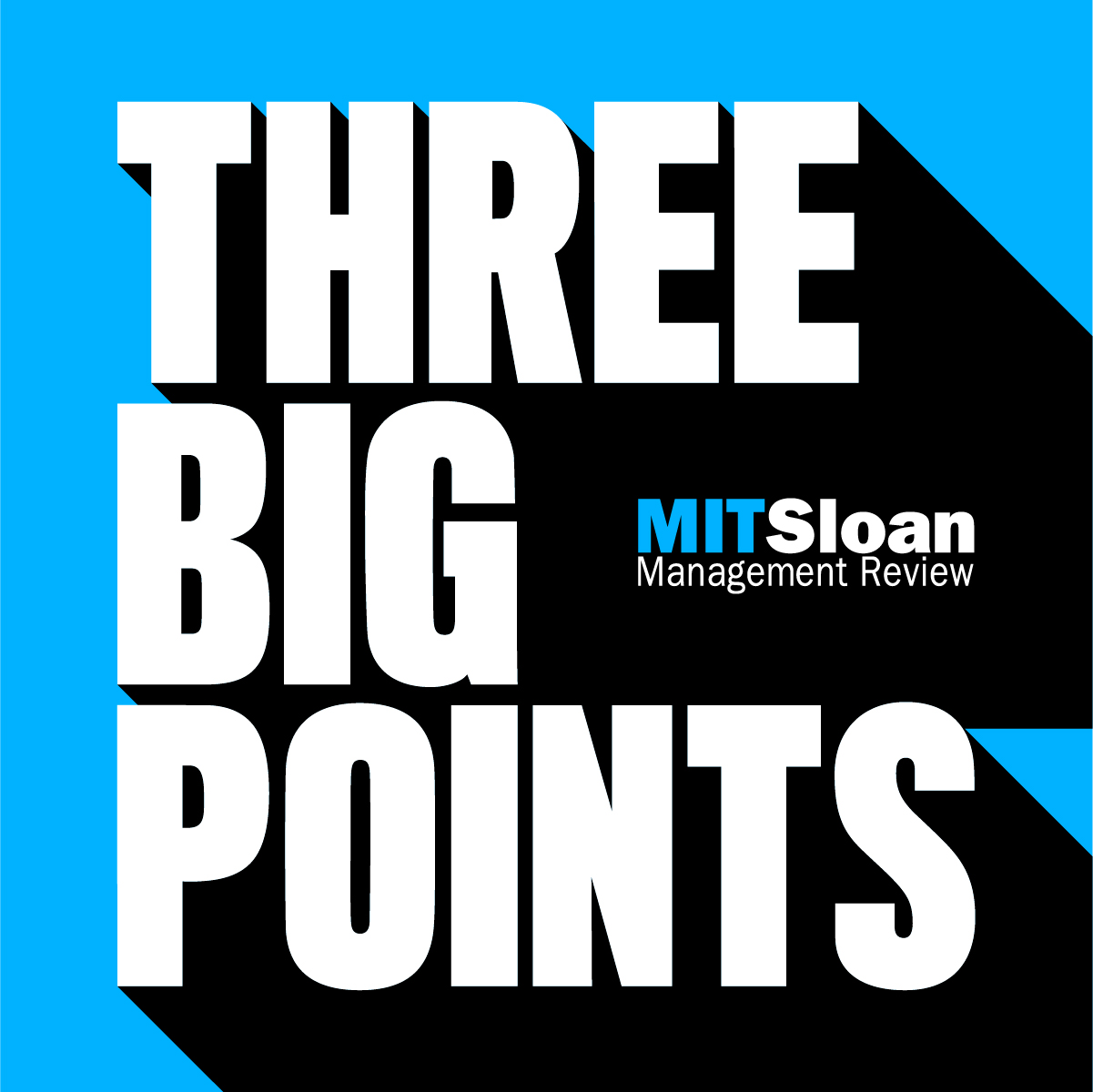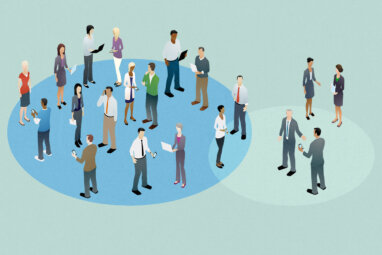Topics
As companies adjust to the reality that the sudden shift to remote work we experienced in March and April of 2020 is unlikely to shift back with anything like the same suddenness, leaders are faced with a new challenge: how to make remote work a permanent and productive part of their long-term workforce strategies.
Enter Kristine Dery, research scientist and program manager for the MIT Center for Information Systems Research. Dery’s research on the employee experience of remote and distributed work has a great deal to teach organizational leaders. To start, focus on the words employee experience. For many of us, remote work has been a matter of survival — it’s how we and our organizations are coping with the social distancing required by the COVID-19 pandemic. As we rushed out of our offices and into our living rooms and kitchens, we mainly focused on carrying on the work we were accustomed to doing in a colocated office environment. Well, as it turns out, replicating office protocols in our homes does not make for a particularly rewarding employee experience.
For Further Reading
So Dery urges us to take a fresh look at remote work and how it can become not just something we suffer through, but something that actually helps us excel. This means working with your employees to iterate designs for physical spaces and operational processes that work; it means adopting new management techniques; and it may mean being willing to revisit how you communicate and how you lead. Listen to the full episode to learn more.
Subscribe to Three Big Points on Apple Podcasts, Spotify, or Google Podcasts via the Subscribe dropdown menu above.
Transcript
Kristine Dery: This is the hardware to “heart-ware” place. This is where we start thinking about “How are you feeling? Are you OK? What is it like working from home with your pets and your kids and your parents and everything else that is around you right now?”
Paul Michelman: I’m Paul Michelman, and this is MIT Sloan Management Review’s Three Big Points. Each episode, we take on one topic that leaders need to be on top of right now and leave you with three key takeaways for you and your organization.
Kristine Dery: Today, these companies are most challenged by how they transform their business models, obviously for digital, and I would argue that never before has that been more important than it is right now.
Paul Michelman: That’s Kristine Dery, research scientist and program manager for the MIT Center for Information Systems Research. And she says there are some key things to remember if you want a remote work culture to thrive in today’s environment. Now that many companies have essentially been forced to operationalize working from home, it’s time to help them excel, says Dery. And that means learning from employees to constantly iterate, because it won’t be a straightforward process as we go from crisis mode into creating a different way of working that’s meant for the long term.
Kristine Dery: Employee experience has been defined in our research as “How easy is it for you to do your work today and then reimagine your work of tomorrow?” This process of creating a great employee experience for our people is normally challenging, but today it is even more challenging and patchy and very iterative. And that iteration is happening on the fly and with often very incomplete information — and that’s OK.
Paul Michelman: Employee experience isn’t just about what platforms you use to connect and communicate, she points out.
Kristine Dery: We’re talking about the technologies and space and symbols and social networks that make up our adaptive work environment — but also the habits, the rituals that make up how we behave.
Paul Michelman: Dery’s data shows that paying attention to the employee experience — before the pandemic, but especially now — can have a big payoff.
Kristine Dery: The better we get at both of those things — creating the right work environment and building the right rituals and behaviors — then the easier we make it for our people to work and to deliver value. If we get both sides of that coin right, then the top 25% of our 280 firms that we’ve studied perform very differently. So this matters. They’re able to deliver much better customer satisfaction, their people have more capabilities [and] have better ways of thinking about how they work together to be able to deliver for the customer. [They’re] twice as innovative.
Paul Michelman: Employee experience has, of course, been impacted tremendously by the COVID-19 crisis. Understanding that, we need to redesign the experience going forward. And that’s not just about a change of scenery.
Kristine Dery: If we come out of this only focused on whether our people should be working in the office or working at home, then I think we’ve missed a big opportunity to redesign our employee experience. Space really matters, but only when it’s an integrated part of the employee experience strategy moving forward.
Paul Michelman: Dery says there are other levers we can pull to improve the employee experience — starting with IT systems and thinking about how we can truly digitize work and not just work digitally.
Kristine Dery: A lot of the technologies that we’ve already got in place are really starting to add value and being used in new ways. One example is a major retailer that I spoke to in Asia who shared their experiences that they’ve been having with agile teams — having people colocated in one space has been much more effective for them. Now, COVID-19 presented a whole lot of new challenges for these teams that have been met by team leaders playing with some of their existing tools, finding capabilities that they never had before — for example, interactive whiteboards on virtual calls — and using them in new ways. IT leaders are finding that just getting out of the way and enabling these features to be used — software to be downloaded, experiments to happen — has produced some really surprising and very fast results. So not only are these problems being solved faster, but they are also developing new capabilities and building new minimum viable products.
Paul Michelman: The second big lever that needs to be pulled is what Dery calls sustaining leadership.
Kristine Dery: There’s a theme here that’s coming up, which is about checking up versus checking in. And this is the hardware to “heart-ware” place. This is where we start thinking about “How are you feeling? Are you OK? What is it like working from home with your pets and your kids and your parents and everything else that is around you right now?” It’s challenging. And so it’s not just about checking up to say, “Are you doing the work that you’re supposed to do? Are you delivering on your KPIs? Are we realizing the targets that we’ve set for ourselves?” But rather, it’s about checking in to make sure that everybody is OK. And every one of our CIOs that I’ve been talking to in the last few weeks has found that this has been one of the most challenging and time-consuming things that they’ve been doing, but also the most rewarding.
Paul Michelman: This is a very different kind of interaction than many CIOs and other leaders are used to, she says.
Kristine Dery: This has become less about communication [and] much more about dialogue, much more about building trust, much more about the chitchat, as one CIO spoke to me about yesterday. The chitchat is becoming a really valuable part of learning who our people are, what are the things that they’re finding challenging, and how they’re able to build on capabilities and deliver more value as they’re absorbing this new world of work and learning on the fly. Gerard Florian at ANZ refers to people “playing out of position,” and he, like at other large organizations, is moving people around to where they’re needed right now. But as they move out of their typical role and move into these new roles, we’re seeing that they need a lot more support. They need a greater sense of community.
Paul Michelman: This work takes a lot of new skills for some leaders. It’s about going from transactional to relational.
Kristine Dery: One CIO from a European financial services company calls each of his direct reports every day just to check in. And he leaves meetings for the issues of work, but he uses personal calls, personal connections, to get a much better understanding of these needs of his people. And what he’s finding is that the value that he’s getting from that is extraordinary. New people are rising up to leadership that have never been there before. They are finding there are insights about their employees as they start working from home and the challenges of working in environments that they’re not used to. So this new lens of experience, where both leaders and their teams are working virtually, has created some incredible new insights and empathy. And we’re seeing companies that typically have got still quite hierarchical environments looking at a very different style of leadership as they move into these more flattened and democratic situations with meetings that are completely virtual.
Paul Michelman: Companies don’t necessarily have to build new tools or capabilities; it’s often about adapting ones that they already have.
Kristine Dery: One of our CIOs talked this week about the increased use of community and social. And these are things that they have been very aware of in the past. They are tools that they have had sitting on their shelves; they’ve been used in pockets throughout the organization. There’s increased use of community both for social events — getting people together, getting people to have some fun at the end of the week, if it’s quiz nights or drinks on a Thursday or whatever it might be — but also social media groups where leadership are getting together to share some of their challenges around the world and experience some of the speed bumps and the difficulties that their colleagues are going through…. To be able to work together using these social media groups has been something that they have promised themselves in the past, never got around to, and now are really engaging with and finding that they’re getting incredible value.
Paul Michelman: This kind of checking in also helps leaders identify the real problems that their employees are facing so that they can implement meaningful solutions.
Kristine Dery: We found this in all of our research in the past for employee experience — that understanding these speed bumps, checking for them actively, was a real difference between companies that were high performing in terms of employee experience and those companies in the bottom 25% of our study. These leaders in these companies are actively looking for these speed bumps, actively looking for the things that make it hard for our people to deliver, and then working to resolve those in a very time-effective way. The speed bumps are not things that we deliberately put in place; they’re things to do with business rules and technology restrictions — business silos that just make it hard for employees to work. So now’s the time to really look at these speed bumps in more detail. They’re becoming much more evident.
Paul Michelman: Trying to remove the hurdles in the way of employee effectiveness, once again, has an impact on the bottom line.
Kristine Dery: These speed bumps destroy all the value that we’re trying to create at the front end with customers. If we’re not enabling our employees to work effectively with customers, and we’re not enabling those new customer-created innovations to work effectively, then we’re just destroying the value through the hard things that we’re forcing our people to go through.
Paul Michelman: This process for leaders — it’s never really done.
Kristine Dery: Making learning explicit right now is going to help us work out what we’re going to focus on in this recovery phase. The first thing is to make these speed bumps visible, to gather the data that they’re seeing — whether they’re in story form, whether they’re what happened when a customer called in to solve a problem and we either did it really well or we messed up. What are the data points that help us resolve that? What are the stories? One Asian financial services company uses journalists and cartoonists and YouTube stories to help tell these stories so they’re at arm’s length from the employees — making it safer for them to share those stories and then encouraging them to be part of the solution. Another insurance company that we’ve been speaking to has set up a COVID-19 website to gather data from anywhere and everywhere. So not only is this an opportunity to be able to help solve Q&A problems, but also [for] gathering data on the speed bumps and then crowdsourcing solutions.
Paul Michelman: Dery says that we need to be able to adapt. But if we learn to do so effectively, it sets us up to manage into a future where adaptation and iteration will be the norm.
Kristine Dery: What we have to keep an eye on is, what data’s going to be important? What insights will be important? Because that will enable us to shift from thinking about this crisis as just being a shift from colocated to more distributed ways of working and really an opportunity to open up the employee experience and decide how it is we want our people to work in this new world — what sort of technologies, how we develop these technologies, how we deliver them, but then also very different, more empathetic ways of leading with a lot more touch points with employees, really enabling the voice of employees to be heard and then iterating around that to ensure that we’re constantly developing an employee experience that’s relevant for the digital world.
Paul Michelman: That’s Kristine Dery, research scientist and program manager for the MIT Center for Information Systems Research.
And now, three big points about iterating with the work environment to meet the needs of both today and tomorrow.
Paul Michelman: Number one: Working remotely means redesigning the employee experience, and it’s not just about working in a different space.
Kristine Dery: You can have all the technology and systems that you’d like, but if you don’t understand people — customers, employees — then it’s very difficult to deliver the capabilities that you’re really after.
Paul Michelman: Number two: Leaders need to be ready to learn.
Kristine Dery: What I would encourage you to do is really keep an eye on systemic learning right now. Those companies that are gathering data, gathering insights, gathering stories, and then using those to develop the new employee experience are more likely to come out of this with a new lens to deliver on the customer experience innovation and then be able to do that in a more cost-effective way in a very different and new world of work.
Paul Michelman: And number three: This process of experimentation — it’s messy, but it can give you real results.
Kristine Dery: We’re constantly iterating as leaders to be able to support and enable the employees that need to deliver their best.
Paul Michelman: That’s all for this week’s Three Big Points. Remember, you can find us on Spotify, Apple Podcasts, Google Podcasts, Stitcher, TuneIn, and wherever fine podcasts are streamed.
Three Big Points is produced by Mary Dooe. Music by Matt Reed. Marketing and audience development by Desiree Barry. Our coordinating producers are Michele DeFilippo and Mackenzie Wise.





